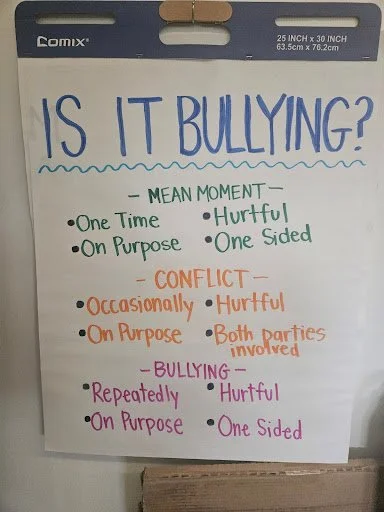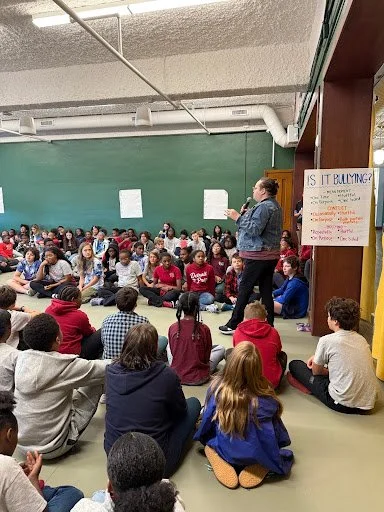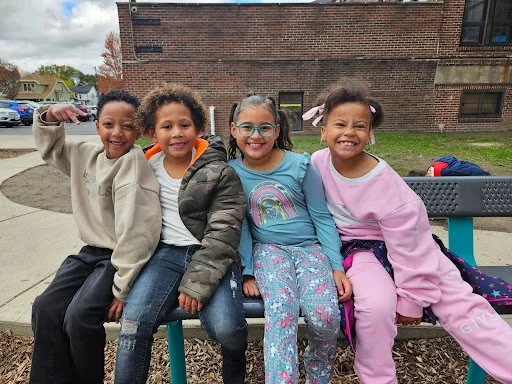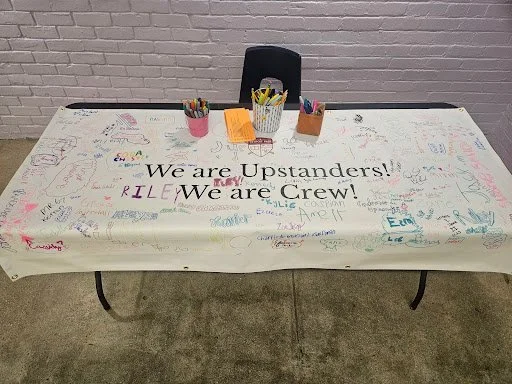Being an Upstander at Detroit Prep
Did you know that October was National Bullying Prevention Month? In October, our crews were busy learning about what it means to be an upstander, and how to stop bullying when they see it happening.
An upstander is someone who recognizes that something is wrong and chooses to act. They don’t stand by, they stand up. Conversely, a bystander is someone who sees bullying happening, but does not get involved. They may witness bullying but don’t have the skills or the comfortability to intervene.
Throughout October, students in grades 2-8 engaged in weekly lessons around being an upstander. They began by learning the difference between a conflict or bullying. A conflict is usually a one-time event, where two or more people have an argument or disagreement with each other. Bullying is when one person or a group of people repeatedly use their power to hurt or control someone else. The 4 types of bullying that students learned about were:
Physical Bullying: Hurting someone’s body or property.
Examples include pushing, shoving, tripping, stealing, or damaging belongings
Emotional Bullying: Hurting someone’s feelings or reputation
Examples include name-calling, spreading rumors, and social exclusion
Relational Aggression: Hurting someone’s social standing
Examples include starting gossip, trying to get people to stop being friends with someone, or giving the silent treatment
Cyberbullying: Using technology to hurt someone
Examples include sending mean messages, posting embarrassing pictures, or creating fake social media accounts to impersonate someone
After learning about different types of bullying, it was time to teach students strategies that they can use to interrupt bullying when they see it happening! Students were taught the 4 D’s:
The 4 D’s to disrupt bullying:
Direct: Confronting the bully directly, right away
Example: A student says something mean about another student's clothes. You say, "Hey, that's not cool. Leave them alone."
Distract: Interrupt the bully by changing the subject
Example: You see two students arguing. You walk up and say, "Hey, did you see the homework for science? I'm so confused." This changes the subject and gives the other student a chance to leave.
Delegate: Get help from others, like a trusted adult (parent, teacher, coach, etc.)
Example: You see a student being teased repeatedly. You go to a teacher, a school counselor, or even a trusted friend and say, "I'm worried about [Student's Name]. Can we figure out a way to help?"
Delay: Wait to act until the situation has passed, then check in with the victim
Example: You see something hurtful happen but don't feel safe to step in right away. After class, you find the person who was targeted and say, "Hey, I saw what happened. Are you okay? I'm here if you want to talk."
The key to these strategies are that students have a choice in how they will be upstanders – there is not a single correct way to disrupt bullying, it depends on the situation!
Our Bullying Prevention Month ended with the entire school reading and signing our “Upstander Pledge.” Once they committed to being an upstander and treating others with respect, they had the opportunity to sign our Upstander Banner, which will be displayed in the lunchroom to remind us all of our important commitment! It was a great month at Detroit Prep, and we are so proud of our students for their commitment to respecting each other!
The Upstander Pledge
I pledge to be an upstander and help create a safe and kind school for everyone.
I will use my voice to speak up when I see someone being bullied.
I will not be a bystander, but an upstander who supports others.
I will treat everyone with respect and empathy, even if they are different from me.
I will include others and stand up for those who are left out.
I will report bullying to a trusted adult, like a teacher, parent, or counselor.
I will do my part to make our school and community a place where everyone feels safe, included, and valued.
I promise to be a friend and an ally to those who need it.






